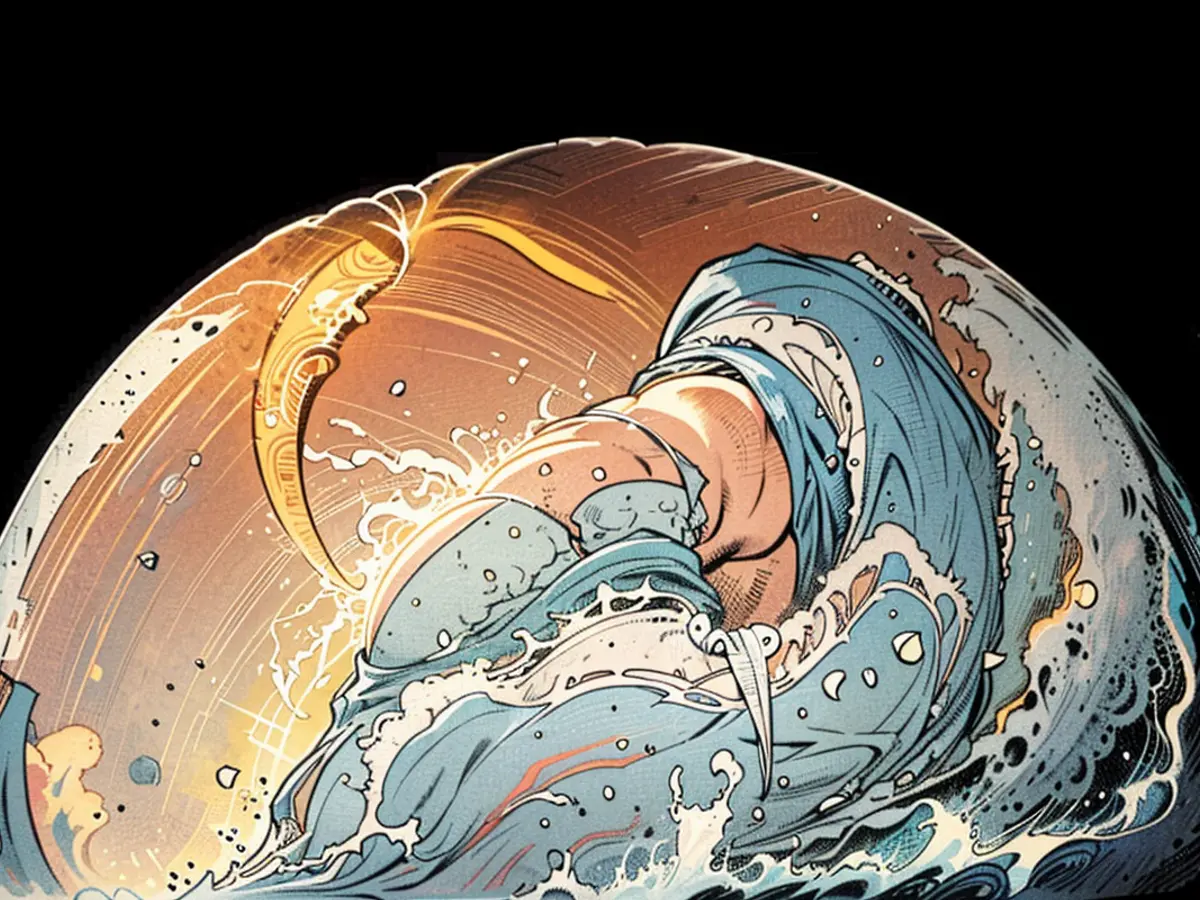Bleach found on Pluto's moon, Charon.
The largest moon of Pluto, named Charon, has a frosty surface. Recent investigations conducted by an international team utilizing the "James Webb" space telescope have revealed the presence of carbon dioxide and a substance commonly utilized on Earth for bleaching and disinfecting, alongside previously discovered compounds. According to experts, this discovery showcases the telescope's outstanding capabilities. The substance, which serves a similar function on Earth, is hypothesized to have formed on Charon due to exposure to space radiation, as stated in "Nature Communications" by researchers.
"The advanced abilities of the 'Webb' telescope have enabled our team to analyze the light reflected by Charon at wavelengths far longer than previously feasible," explains Ian Wong from the Space Telescope Science Institute in Baltimore (USA). "By doing so, we have expanded our knowledge of this intriguing celestial body."
Pluto, once classified as the ninth planet in our solar system, is now considered a dwarf planet. Unlike larger planets, it does not orbit the sun alone but forms part of a vast array of thousands of objects known as the Kuiper Belt situated beyond Neptune. Pluto, whose diameter measures 2,375 kilometers, orbits the sun in an elliptical orbit that ranges from 30 to 50 times the distance between Earth and the sun.
Discovery of Charon
Pluto's enormous moon, Charon, was not identified until 1978. Boasting a diameter of 1,212 kilometers, it is quite substantial in size compared to Pluto, leading astronomers to frequently refer to the pair as a "double dwarf planet." Four smaller moons of Pluto have since been identified. Charon is thought to have originated from the impact of Pluto with another large body in the Kuiper Belt, with the smaller moons being remnants of this collision.
In July 2015, the American spacecraft "New Horizons" traversed the Pluto-Charon system and provided the first detailed data about these distant celestial bodies. Researchers discovered water ice, nitrogen, ammonia, and tholins, reddish-brown molecules composed of carbon, nitrogen, and hydrogen, on Charon's surface. The new observations made with the "Webb" telescope have now augmented these substances with carbon dioxide and hydrogen peroxide.
Reasons for CO2 and H2O2
"The carbon dioxide likely stems from Charon's interior and was discharged upon impact from smaller celestial bodies," explains Silvia Protopapa from the Southwest Research Institute in the USA, who led the investigations. The existence of hydrogen peroxide, however, was more challenging to comprehend. This compound is produced on Earth through a complex chemical reaction.
The substance is hypothesized to have formed under the impact of ultraviolet radiation from the sun and high-energy particles from the solar wind and cosmic rays, according to the team. Utilizing laboratory experiments, researchers demonstrated that hydrogen peroxide can indeed be produced under conditions similar to those on Charon in mixtures of carbon dioxide and water ice.
The groundbreaking findings from the 'James Webb' space telescope not only confirmed the presence of carbon dioxide on Charon but also suggested the potential existence of hydrogen peroxide, a substance previously unidentified on this moon.
Further analysis of the data obtained by the 'Webb' telescope could potentially provide insights into the production process of hydrogen peroxide on Charon, contributing to our understanding of the chemical processes in distant celestial bodies.







